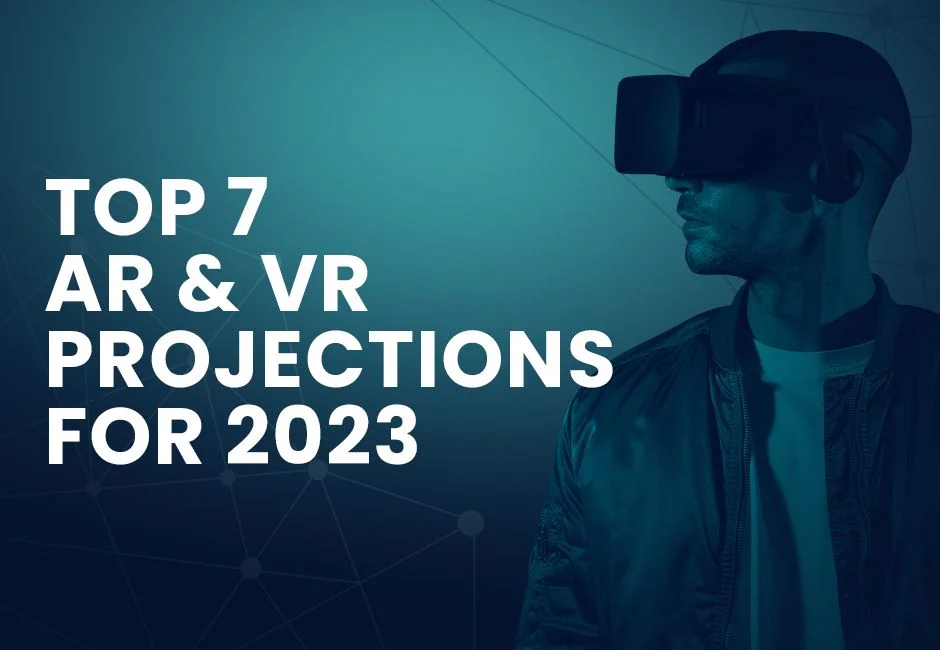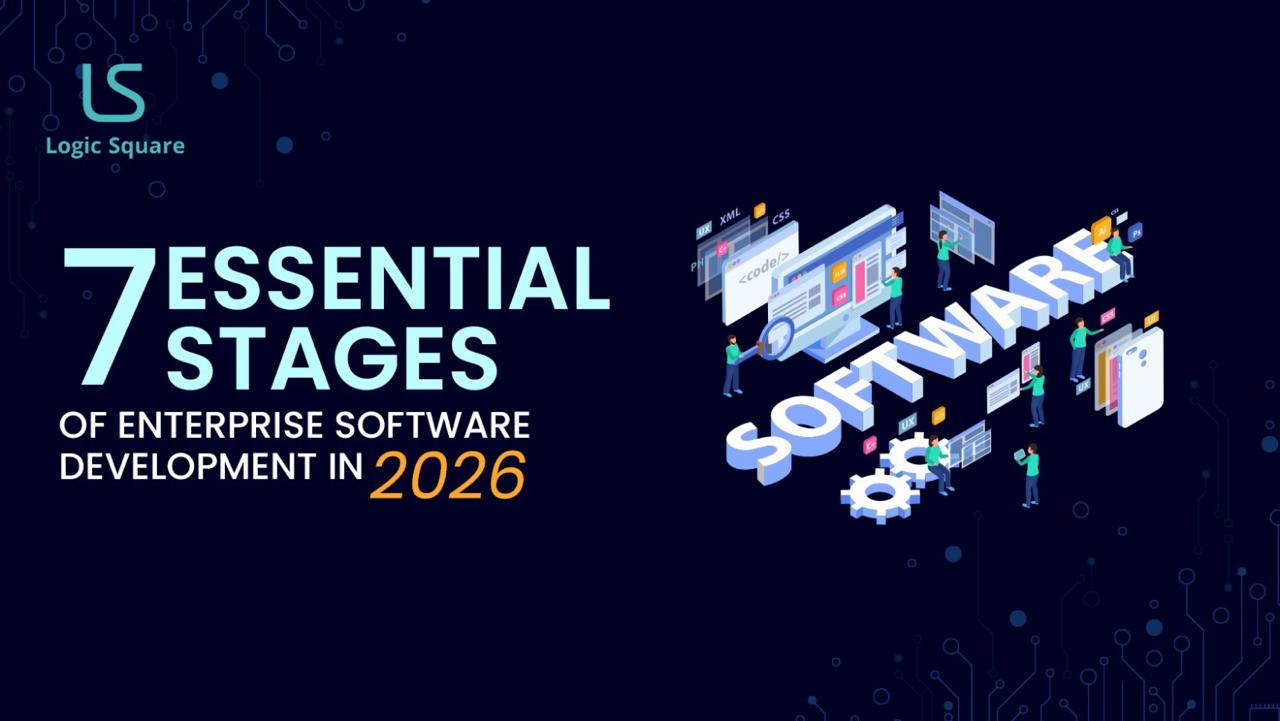Virtual reality (VR) is the most valuable disruptive technology for businesses in terms of customer engagement. The technology’s very design assumes that when a user engages with an artificial world, he or she will be oblivious to the real surroundings and immerse themselves in the virtual world. Businesses now have the opportunity to leave behind less nimble rivals by leveraging this technology as per their requirements.
Realistic simulations of the actual world are what virtual reality technology aims to achieve. It completely isolates you from reality by simulating it in three dimensions. Virtual reality is typically experienced using dedicated VR headsets or VR devices that transform the user’s mobile device into a VR device. It has been claimed that the VR experience is highly invigorating to the viewer.
Table of Contents
ToggleThe Basics of Virtual Reality
For VR technology to succeed, it has to realistically simulate environments to hoodwink the human brain and make it believe it is a reality. From a scientific perspective, it all begins with an understanding of how the human brain interprets what a person sees to create a mental image of the world surrounding them.
The deal is that the perception of reality is based on the rules that a person develops, using his experience as a guide. For example, using objects that can be identified and their size relative to each other, a person can judge the distance. The shadows cast by objects around, allow detection of the light source. VR designers can use these usual rules to create virtual environments that match people’s mental expectations of reality. Thus, the finished result is a holistic experience that people interpret as “real.”
VR technology creates a simulation, a fully immersive 3D world, allowing users to freely control and explore different environments as if they are physically present. This groundbreaking idea provides users with an unparalleled sensory experience, blurring the lines between the physical and digital worlds. VR technology allows its users to experience new environments and engage in activities without having to leave their homes.
To understand better, we need to experience AR, VR, and mixed reality and learn what these technologies are:
The Spectrum of Reality Technologies: Virtual, Augmented, and Mixed
Education, healthcare, sports, real estate, and shopping have all benefited through the advancement in virtual reality, augmented reality, and mixed reality.
VR creates a simulated 3-dimensional experience, while AR overlays digital information onto the real world. For example, IKEA’s AR app allows customers to visualize furniture in their homes before making a purchase. MR takes things a step further by combining real and virtual elements to create new, interactive environments. MR technology has applications in education, healthcare, and even military training.
The spectrum of reality technologies provides innovative ways to enhance our experiences and opens up new possibilities for industries of all types. As we approach 2023, the projections for these technologies are becoming more and more promising.
Now let’s look at the top 7 AR and VR projections for 2023.
Increased Adoption in the Healthcare Industry
The healthcare sector will be one of the most rapidly growing AR and VR technologies markets in 2023. Professionals in the healthcare and pharma industries can build precise 3D models of the human body with these technologies, resulting in better patient diagnoses and treatments. Doctors can use VR and AR to train interns and probationers, and they can also be used to educate patients during consultation sessions.
Advancements in Gaming and Entertainment
The gaming and entertainment sectors will remain important in terms of driving growth as augmented reality and virtual reality technology continue to advance. In 2023, we can expect to see even more immersive gaming experiences and virtual reality entertainment options, ranging from virtual concerts to theme park experiences.
Increased Use in Education
The use of AR and VR tech in education is already on the rise, but 2023 will see even more adoption. Trainers can easily engage with students in a way that was previously impossible, thanks to the ability of an immersive learning experience. Such as exploring the human body or a science lab can help students engage and be interested in the subject matter.
Expansion into Industrial Applications
AR and VR technologies have already proven their worth in industrial applications such as training, but 2023 will see an even greater expansion into this area. With the capability to provide virtual training conditions and scenarios, workers can learn and practice their skills in a safe and controlled environment. On the other hand, in industries like automobiles, AR and MR technology can be used to demonstrate the finer points of a car to a customer.
Advancements in Retail and E-commerce
The retail and e-commerce sectors are expected to witness a notable impact from the rising popularity of online shopping, with AR and VR technologies poised to assume a crucial role. With Virtual Try-Ons, you can digitally try on anything to see if it fits, such as spectacles, shoes, jackets, or anything. No more hustling around the fitting room, trying on one item of clothing at a time. In 2023, we can expect to see more virtual try-on experiences, 3D product demonstrations, and even virtual stores.
Increased Use in Real Estate and Architecture
AR and VR technologies have already been used in the real estate and architecture industries to provide virtual property tours and 3D building models. Real estate developers can use AR and VR technologies to showcase the exterior and interior of the property that isn’t built yet; so potential buyers can get a clear look at what is being offered. In 2023, we can expect to see even more adoption in these areas, providing buyers and architects with more immersive experiences.
Advancements in Social Media
Incorporating augmented reality and virtual reality technologies into social media platforms has already commenced. However, it is anticipated that further development will happen in this area by the year 2023. This could include the ability to share AR experiences with friends, more immersive social media advertising, and even the creation of entirely virtual social media platforms.
What’s Next
Businesses have realized that to stay ahead of the competition; they must keep innovating and offering more than their competitors. The projections for AR and VR technologies in 2023 are extremely promising. Adopting cutting-edge technologies is the most efficient way to attract customers and lead the race.
Among many other technologies, augmented reality, virtual reality, and a merger of these two called mixed reality have collectively transformed how users and prospective customers interact with brands. From healthcare and education to gaming and entertainment, these technologies will continue to impact numerous industries and provide new and exciting opportunities for growth and innovation.
Experience the future with our AR & VR solutions today!
Virtual reality (VR) is the most valuable disruptive technology for businesses in terms of customer engagement. The technology’s very design assumes that when a user engages with an artificial world, he or she will be oblivious to the real surroundings and immerse themselves in the virtual world. Businesses now have the opportunity to leave behind less nimble rivals by leveraging this technology as per their requirements.
Realistic simulations of the actual world are what virtual reality technology aims to achieve. It completely isolates you from reality by simulating it in three dimensions. Virtual reality is typically experienced using dedicated VR headsets or VR devices that transform the user’s mobile device into a VR device. It has been claimed that the VR experience is highly invigorating to the viewer.
The Basics of Virtual Reality
For VR technology to succeed, it has to realistically simulate environments to hoodwink the human brain and make it believe it is a reality. From a scientific perspective, it all begins with an understanding of how the human brain interprets what a person sees to create a mental image of the world surrounding them.
The deal is that the perception of reality is based on the rules that a person develops, using his experience as a guide. For example, using objects that can be identified and their size relative to each other, a person can judge the distance. The shadows cast by objects around, allow detection of the light source. VR designers can use these usual rules to create virtual environments that match people’s mental expectations of reality. Thus, the finished result is a holistic experience that people interpret as “real.”
VR technology creates a simulation, a fully immersive 3D world, allowing users to freely control and explore different environments as if they are physically present. This groundbreaking idea provides users with an unparalleled sensory experience, blurring the lines between the physical and digital worlds. VR technology allows its users to experience new environments and engage in activities without having to leave their homes.
To understand better, we need to experience AR, VR, and mixed reality and learn what these technologies are:
The Spectrum of Reality Technologies: Virtual, Augmented, and Mixed
Education, healthcare, sports, real estate, and shopping have all benefited through the advancement in virtual reality, augmented reality, and mixed reality.
VR creates a simulated 3-dimensional experience, while AR overlays digital information onto the real world. For example, IKEA’s AR app allows customers to visualize furniture in their homes before making a purchase. MR takes things a step further by combining real and virtual elements to create new, interactive environments. MR technology has applications in education, healthcare, and even military training.
The spectrum of reality technologies provides innovative ways to enhance our experiences and opens up new possibilities for industries of all types. As we approach 2023, the projections for these technologies are becoming more and more promising.
Now let’s look at the top 7 AR and VR projections for 2023.





